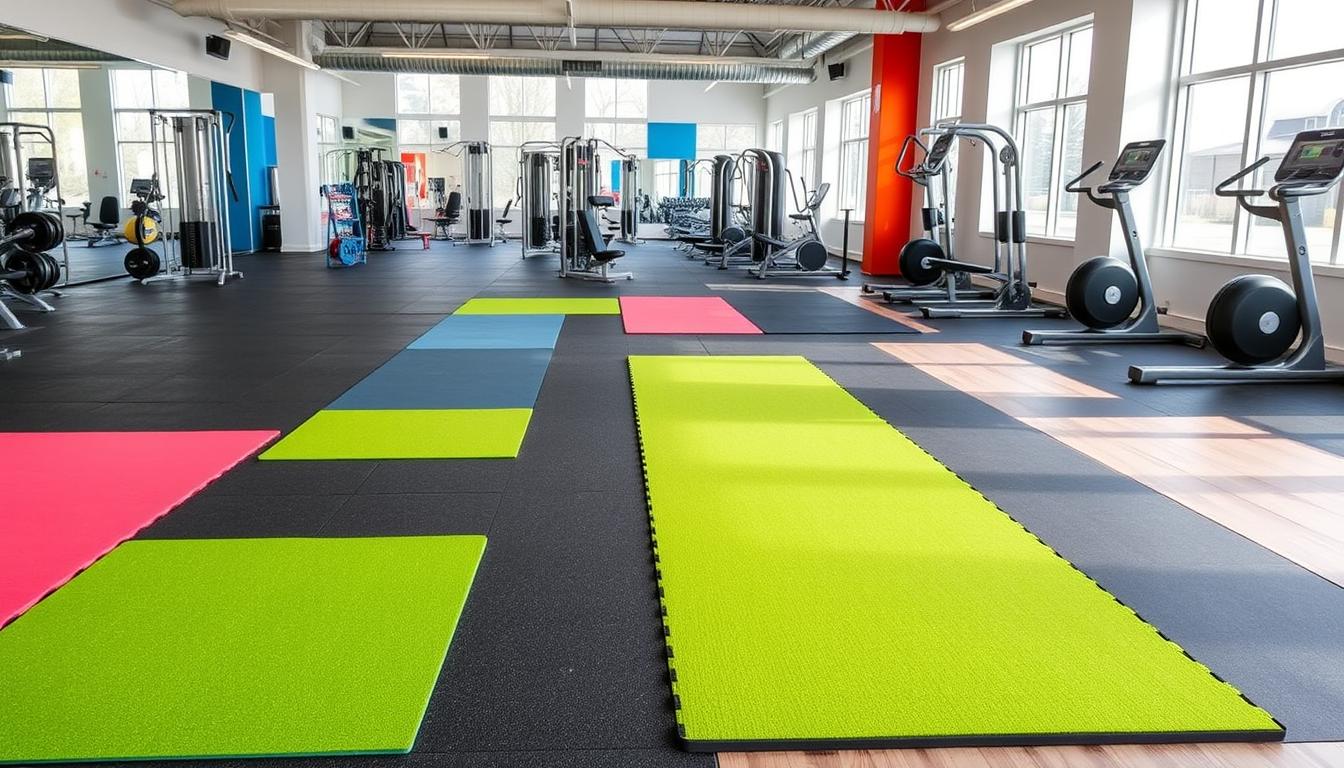I’ve always looked for peanut butter that’s tasty but not too high in calories. Then, I found powdered peanut butter. It’s a big deal for healthy snacks. It tastes great and has lots of protein, perfect for my active life.
PB powder is different from regular peanut butter. It’s made by removing oils and grinding peanuts into a powder. This makes it lower in calories and fat but still tastes amazing. With over 40% protein, it’s a key part of my diet, powering my workouts and keeping me healthy.
Table of Contents
Understanding PB Powder: A Nutritious Alternative to Traditional Peanut Butter
Powdered peanut butter, or PB powder, is a new twist on peanut butter. It’s made differently than regular peanut butter. This makes it healthier and more versatile.
What Makes Powdered Peanut Butter Different
PB powder has less oil and fat than regular peanut butter. It’s made by pressing out oils and grinding peanuts into a powder. This makes it lower in fat and calories but still tasty.
The Manufacturing Process
To make PB powder, peanuts are pressed to remove oils. This leaves a defatted peanut flour, or dehydrated peanut butter. Then, this flour is ground into a fine powder, like nut butter powder.
This process makes PB powder much lower in fat and calories. Yet, it still has some protein. It’s great for adding to many recipes, like smoothies, baked goods, and spreads.
Nutritional Profile of Powdered Peanut Butter
Powdered peanut butter has a special advantage over low-fat peanut butter. It has 480 calories in 8 tablespoons or 104 grams. It’s made up of 23% fat, 35% carbs, and 42% protein.
It has less fat than regular peanut butter, with only 12 grams per serving. This is 15% of the daily value. It means only 12% of its calories come from fat. This makes it a great vegan protein source for those looking for a better nutritional option.
| Nutrient | Powdered Peanut Butter (per 104g serving) | % Daily Value |
|---|---|---|
| Calories | 480 | 24% |
| Total Fat | 12.00g | 15% |
| Sodium | 720mg | 31% |
| Total Carbohydrates | 40.00g | 15% |
| Dietary Fiber | 8.0g | 29% |
| Sugars | 16.00g | 16% |
| Protein | 48.00g | – |
| Calcium | 80mg | 6% |
| Iron | 3.20mg | 18% |
| Potassium | 1200mg | 26% |
Powdered peanut butter doesn’t have as many fat-soluble vitamins as regular low-fat peanut butter. But it has a lot of protein, 48 grams per serving. This makes it a great choice for those who want a lot of protein and less fat.

“Powdered peanut butter offers a unique nutritional profile that caters to those seeking a low-fat, high-protein option without sacrificing the beloved taste of peanut butter.”
Calories and Fat Content Comparison
Looking at the calories and fat in peanut butter alternatives, we see a big difference. Traditional peanut butter has about 190 calories and 16 grams of fat in 2 tablespoons. Powdered peanut butter, on the other hand, is much healthier.
Traditional vs Powdered Peanut Butter
PB Fit has 70 calories and 2 grams of fat in 16 grams. It also has 5 grams of carbs and 8 grams of protein. Peanut Butter & Co. Peanut Powder has 50 calories, 1.5 grams of fat, 4 grams of carbs, and 5 grams of protein in 12 grams.
PB2 Powdered Peanut Butter has 60 calories, 1.5 grams of fat, 5 grams of carbs, and 6 grams of protein in 13 grams. Naked PB has 50 calories, 1.5 grams of fat, 4 grams of carbs, and 6 grams of protein in 12 grams.
Impact on Daily Caloric Intake
The big difference in calories and fat can really affect your daily intake. Powdered peanut butter is a great choice for those watching their calories but still want peanut butter’s taste. PB Fit is affordable, and Peanut Butter & Co. offers many flavors.
PB2 and Naked PB are good for those who like a mix of sweet and salty or a simple, pure taste.
| Product | Serving Size | Calories | Total Fat | Protein |
|---|---|---|---|---|
| Off-the-Shelf Peanut Butter | 2 tablespoons | 190 | 16g | 7g |
| Augason Farms Peanut Butter Powder | 2 tablespoons | 60 | 1.5g | 6g |

Powdered peanut butter is a better choice for those looking for a healthier option. It has fewer calories and less fat than regular peanut butter. Yet, it still tastes great.
Protein Content and Amino Acid Profile
Powdered peanut butter has less protein than regular peanut butter. A 2-tablespoon serving of powdered peanut butter has about 6 grams of protein. This is 12% of the daily value. On the other hand, the same amount of regular peanut butter has around 8 grams of protein.
Even with less protein, powdered peanut butter is still a good plant-based protein source. It can help increase your protein intake in many recipes. Powdered peanut butter is made up of 42% protein, 35% carbs, and 23% fat.
For those looking for a high-protein powder, organic plant-based protein powder is a great option. It has 21 grams of vegan protein per serving. It also has a complete amino acid profile, making it a nutritious and versatile choice.
| Nutrient | Powdered Peanut Butter (2 tbsp) | Organic Plant-Based Protein Powder (1 serving) |
|---|---|---|
| Protein | 6g (12% DV) | 21g |
| Carbohydrates | 5g | 3g |
| Fat | 1.5g | 2.5g |
| Sugars | 2g | 1g |
| Dietary Fiber | 1g | 2g |
| Calories | 60 | 110 |
The organic plant-based protein powder is also gluten-free and kosher. It doesn’t have added sugar. It’s vegan, non-GMO, and made without soy, dairy, or lactose. This makes it perfect for many dietary needs and ensures a delicious taste.

Benefits of Using PB Powder in Your Diet
Powdered peanut butter, or PB powder, is great for your diet. It helps with weight management because it has fewer calories and less fat than regular peanut butter. This makes it a healthier choice that lets you enjoy peanut butter flavor without too many calories.
PB powder is also very versatile in cooking. You can use it in smoothies, oatmeal, baked goods, and even as a spread when mixed with water. Because it’s powdered, a little goes a long way. This means you get the taste of peanut butter without the extra calories or fat.
Weight Management Advantages
Regular peanut butter has 27.8% protein and 49.4% fats. Peanut butter powder, on the other hand, has 40% protein and only about 7% healthy lipids. This big drop in fat makes PB powder a good choice for weight management or a healthy lifestyle.
Versatility in Cooking
PB powder is known for its versatility in the kitchen. You can blend it into smoothies, mix it into oatmeal, or use it in baking. It’s a convenient and nutritious way to enjoy peanut butter without the extra calories or fat.
PBfit powder is a well-known brand of powdered peanut butter. It offers a serving size of two tablespoons. This serving has 70 calories, 2g of fat, 8g of protein, 6g of carbohydrates, 2g of fiber, and 3g of sugar. This concentrated form lets you enjoy peanut butter taste while supporting your health and fitness goals.

Potential Drawbacks and Considerations
Powdered peanut butter has many benefits, but it also has some downsides. One major issue is it lacks healthy fats found in regular peanut butter. These fats are key for heart health, immunity, brain function, and vitamin absorption.
Another problem is powdered peanut butter might not fill you up as much. This is because it has less fat. Some brands might add salt and sugar to make up for the taste loss. So, it’s important to check the labels for quality and avoid additives.
- Lacks the healthy fats found in traditional peanut butter, which are important for overall health
- May be less filling due to lower fat content
- Some brands may add salt and sugar to enhance flavor, so label reading is crucial
The safety and quality of protein powders, including peanut butter alternatives, can vary. This is because of loose industry regulations. High protein intake, heavy metals, pesticides, or harmful additives in some products can be risky for health.
| Potential Drawbacks | Mitigation Strategies |
|---|---|
| Lack of healthy fats | Incorporate other sources of healthy fats, such as nuts, seeds, or avocado, to balance your diet |
| Potential for added salt and sugar | Carefully read labels and opt for peanut butter alternatives that are minimally processed and free of unnecessary additives |
| Impurities and contaminants | Choose reputable brands that undergo third-party testing and certification for quality and safety |
| Digestive issues | Gradually introduce peanut butter alternatives and monitor your body’s response; consider alternative protein sources if needed |
It’s crucial to talk to a healthcare professional or registered dietitian before adding powdered peanut butter or peanut butter alternatives to your diet. They can guide you on making the right choice and help balance your nutrition.

How to Choose the Best Powdered Peanut Butter
When picking the best powdered peanut butter, always check the labels. Look for brands with simple, high-quality ingredients. Ideally, they should have just organic peanut powder or natural peanut butter powder and maybe a bit of salt. Avoid products with added sugars, oils, or artificial stuff. These can lower the natural health benefits.
To find the right powdered peanut butter, let’s look at some popular brands and what makes them special:
| Brand | Calories (per serving) | Fat (per serving) | Carbs (per serving) | Protein (per serving) | Key Highlights |
|---|---|---|---|---|---|
| PB Fit | 70 | 2g | 5g | 8g | Competitively priced, 80% less fat than regular peanut butter |
| Peanut Butter & Co. Peanut Powder | 50 | 1.5g | 4g | 5g | Offers a sugar-free option and six different flavors |
| PB2 | 60 | 1.5g | 5g | 6g | Requires water to achieve the ideal consistency |
| Naked PB | 50 | 1.5g | 4g | 6g | Made with just one ingredient: crushed roasted peanuts |
By looking at the nutrition and special features of these brands, you can choose the best one for you. This choice should fit your diet and taste preferences.
Creative Ways to Use Powdered Peanut Butter
Powdered peanut butter is a versatile ingredient that can make your cooking and baking better. It’s not just for peanut butter and jelly sandwiches anymore. This powder adds flavor and nutrition to your meals.
- Mix it with water to create a spreadable peanut butter for toast, bagels, or fruit.
- Stir it into Greek yogurt for a protein-packed snack or breakfast.
- Blend it into smoothies and protein shakes for an extra creamy texture and nutty taste.
- Incorporate it into pancake or waffle batter for a delightful peanut butter twist.
- Use it as a coating for roasted vegetables or as a savory sauce for stir-fries and Asian-inspired dishes.
- Sprinkle it on top of oatmeal, chia pudding, or overnight oats for a nutrient boost.
- Bake it into muffins, cookies, or energy bars for a satisfying peanut butter flavor.
There are endless ways to use peanut butter recipes and pb powder uses. Try it in your favorite dishes and snacks for a tasty twist.
“Powdered peanut butter is a game-changer in the kitchen. It allows you to enjoy the taste of peanut butter without the high-fat content, making it a healthier alternative for your favorite recipes.”
Healthy Peanut Butter Cups
One tasty way to use powdered peanut butter is in homemade peanut butter cups. These Healthy Peanut Butter Cups are a guilt-free, protein-packed treat. Each cup has 136 calories, 16g of carbs, 3g of protein, and 7g of fat.
To make these cups, you’ll need 1/2 cup of peanut butter powder, 1/2 cup of almond milk, 2/3 cup of melted chocolate chips for topping, and 1 tsp of coconut oil. The peanut butter filling needs to be chilled for 30 minutes before assembling. The cups should chill for about 45 minutes before serving.
Enjoy these peanut butter recipes as a snack or dessert. Store leftovers in an airtight container in the fridge for up to 5 days or in the freezer for up to 1 month.
Smoothies and Protein Shake Recipes
Powdered peanut butter is great for smoothies and protein shakes. It’s perfect for a pre-workout boost or a post-workout recovery drink. These recipes will make your nutrition better.
Pre-Workout Blends
For energy before your workout, mix powdered peanut butter with a banana, oats, and milk. This mix of carbs, protein, and fats gives you lasting energy.
Post-Workout Recovery Drinks
Make a protein-rich shake after your workout. Blend powdered peanut butter with chocolate or vanilla protein powder and almond milk. Add spinach, berries, or chia seeds for extra nutrition.
Try different flavors to find your favorite smoothie. Powdered peanut butter’s creamy and nutty taste goes well with many ingredients.
“Smoothies and protein shakes are a convenient way to incorporate powdered peanut butter into your diet, providing a nutritious boost of protein, healthy fats, and carbohydrates to fuel your active lifestyle.”
These PB-infused recipes are great for muscle gain, weight loss, or a balanced diet. Enjoy the taste and health benefits of powdered peanut butter in your smoothies and shakes.
Baking with Powdered Peanut Butter
Powdered peanut butter, also known as peanut flour, is great for baking. It’s low in fat but high in protein. This makes it a good choice for many recipes, like cookie dough and muffins.
It adds a rich peanut butter taste without the extra moisture or fat. This is good for the texture of your baked goods.
Try using powdered peanut butter for a low-fat peanut butter frosting. Or use it as a coating for energy balls. When you swap it for regular peanut butter, remember to adjust the liquid. This keeps your dough or batter just right.
The market for low-carb, high-protein peanut butter powder recipes is booming. Pinterest is full of peanut butter powder ideas. More people want to bake without feeling guilty, and powdered peanut butter is their choice.















Female Muscle Growth Stories: Real Fitness Journeys
[…] Protein […]